Films from the country "espagne", sorted by revenue

Syntoniser Amani (2008)
, 1h15Origin Espagne
Genres Documentary
Themes Films set in Africa, Documentary films about politics, Political films
After the ikiza (the Burundi killings of Hutu intellectuals in 1972), the Burundi refugees exiled in Tanzania founded the Party for the Liberation of the Hutu People. Its armed representative is the NLF, the National Liberation Front. In 2006, after prolonged negotiations with the opposition and the Army, the president of Burundi made a public call, over the radio, to all NLF soldiers asking them to step away from the armed front and voluntarily join the peace process. Within this context, Tune in to Peace enters the lives of three young people: Désiré, Jean Claude and Jérémie, all ex members of the NLF.
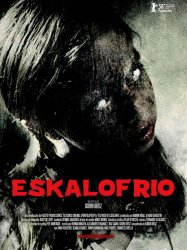
Shiver (2008)
, 1h30Origin Espagne
Genres Thriller, Horror
Actors Junio Valverde, Blanca Suárez, Jimmy Barnatan, Mar Sodupe, Ariadna Cabrol
Aménagé depuis Barcelone, une mère et son fils atteint d'une maladie génétique rare appelé Xeroderma pigmentosum s'installent dans les montagnes des Asturies, au Nord de l'Espagne, à l'abri du soleil pour ce dernier. Contrairement à ce qu'ils croyaient, les forêts couvrent une créature mystérieuse tuant l'un après l'autre des villageois. Tous soupçonnent le jeune garçon…
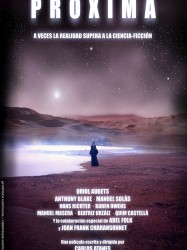
Próxima (2007)
, 1h56Directed by Carlos Atanes
Origin Espagne
Genres Science fiction
Themes Space adventure films
Actors Arantxa Peña, Abel Folk
Tony (Oriol Aubets) runs a small science fiction video store bordering on bankruptcy; his relationship with Natalia (Karen Owens) is getting worse as time goes by, because their interests have diverged. One day, Tony goes to a science fiction convention where a well-known writer Félix Cadecq's (Manuel Solàs) comes to give a chat on his latest work. When he starts his speech, the writer makes a surprising declaration: it's worthless to keep writing science fiction novels, because he has found a new portal; a real and simple way to reach the stars. "Listen to my new CD-book and try it yourself", he proclaims. This announcement is not well received among his estranged fans; but Tony, touched by curiosity, buys Cadecq's CD in order to test what he said.
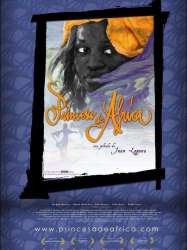
Princesa de África (2008)
, 1h16Origin Espagne
Genres Documentary
Themes Dance films, Films about music and musicians, Documentary films about music and musicians, Documentaire sur une personnalité, Musical films
The story of two dreams. Marem, a 14-year-old dancer from Senegal, dreams of emigrating to Europe, while Sonia, a Spanish dancer, feels drawn by the magic of Africa. Both are linked by Pap Ndiaye, Marem's father and Sonia’s husband. Africa isn't what Sonia had dreamt of (Pap Ndiaye has two additional wives), nor is Europe what Marem expected (there are no children in the street and poverty is also present). Princess of Africa is a love story, full of music and dance, where nothing is what it seems and women are the main characters.

Grupo Yaramá (2008)
, 37minutesOrigin Espagne
Genres Documentary
Le documentaire filme des chants et danses en Afrique occidentale, en particulier au Sénégal et en Guinée-Conakry. Il présente la vie de certains artistes qui par leurs témoignages font part de leurs expériences vécues et du rôle que jouent la musique et la danse dans leur mode de vie.

Distancias (2008)
, 28minutesOrigin Espagne
Genres Documentary
Themes Films about immigration, Documentary films about law, Documentaire sur une personnalité
A group of refugees from the Congo are stuck in Rabat, Morocco. The Spanish borderline stops them from entering Europe. In a room on the outskirts of the city they rehearse a theatrical piece based on their own experiences. An imperfect, unfinished staging. Real life and the stage are all mixed together. Apollinaire tells us, face to face, about the never-ending journey with an uncertain ending. Television images show us how many emigrants are expelled into the desert, forced to start their journey once more. Faces whose names are lost. Behind them, the empty spaces of what has already happened. Silent tracks that tell a story the same as ours.
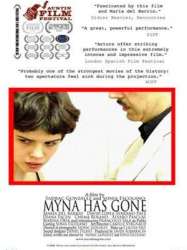
Myna Has Gone (2009)
, 1h57Directed by Sonia Escolano, Sadrac González-Perellón
Origin Espagne
Genres Drama
Themes Films about immigration
Actors Maria del Barrio

Codex Atanicus (2007)
, 1h21Directed by Carlos Atanes
Origin Espagne
Genres Fantastic, Horror
Actors Arantxa Peña, Carlos Atanes
After a brief introduction by Arantxa Peña (usual actress in "atanic" films who locates us into the "atanic" universe), we can see three stories: Metaminds & Metabodies (1995), a crazy and very violent tale about how a sick drunkard meets a lascivious succubus into a hideous tavern's mirror; Morfing (1996), an Atanes' grotesque trip through independent cinema's sewers; and Welcome to Spain (1999), a bloody and lustful nightmare where some people fight for an absurdity: to go up the stairs.
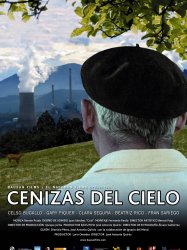
Ashes from the Sun (2008)
Directed by José Antonio Quirós
Origin Espagne
Genres Drama
En Espagne, dans la campagne de Negron, Principauté des Asturies, les habitants vivent au quotidien avec une centrale thermique. Pol Ferguson, un Écossais qui écrit des guides de voyage, traversait la vallée jusqu'à ce que son camping-car tombe en panne. Il y rencontre Federico, paysan espagnol, qui milite contre la pollution de la centrale thermique depuis la mort de sa femme, il y a des années de ça. Pol Ferguson va alors découvrir comment tous les habitants de la vallée vivent au jour le jour au côté d'une centrale thermique dont ils sont dépendants mais qui leur pose de nombreux problèmes de santé et environmentaux.

Camino (2008)
, 2h23Directed by Javier Fesser
Origin Espagne
Genres Drama
Themes Films about children, Medical-themed films, Films about religion
Actors Carme Elias, Nerea Camacho, Manuela Vellés, Jordi Dauder, Jan Cornet
Le film raconte les derniers mois de la vie de Camino, fillette de 11 ans éduquée selon les préceptes rigoristes de l'Opus Dei.
 , 55minutes
, 55minutesOrigin Espagne
Genres Documentary
Themes Films about families
Bamba, a Senegalese man residing in Zaragoza, Spain, goes back to Dakar, Senegal to spend some time with his family. Who are they? What worries them and how do they deal with their loved ones' absence?

La torre de Suso (2007)
Origin Espagne
Genres Comedy
Actors Javier Cámara, Gonzalo de Castro, Fanny Gautier, Emilio Gutiérrez Caba
Cundo emigrated to Argentina to seek a new life. Ten years later he returns home, to the funeral of an old friend, Suso. The film chronicles the reunion with family and friends and how Cundo wants to fulfill the ultimate dream of Suso. The film is a tribute to friendship. And above all friendship in an age where it is not so clear why you should remain friends with your childhood friends.
 , 1h7
, 1h7Origin Espagne
Genres Documentary
Themes Films set in Africa, Documentary films about politics, Political films
Morocco has spent more than 30 years denying the Saharans the right to their own life and land. In exile, the women are the pillar of their struggle; they keep the society together and keep up the fight and resistance. Their struggle, from abroad, from refugee camps, from their occupied land, shows the strength and force of the Saharan women. The "Tebraa" is the Saharan women’s song, be it of love or sorrow, and they sing when they are alone. It’s an intimate song. That’s where we have tried to go, to that place that no army can take away, that place full of pain and hope, of weariness and love, of struggle and desire.
 , 55minutes
, 55minutesOrigin Espagne
Genres Documentary
Themes Films about music and musicians, Documentary films about music and musicians, Documentaire sur une personnalité, Musical films
Mariem Hassan is the voice of the Sahara, the voice of the desert. Worshipped by the Saharaui in exile, Mariem Hassan inspires hope to those who still live in the territories occupied by Morocco. An intelligent woman with an awe-inspiring voice, she has managed to take traditional Saharaui music to the 21st century.
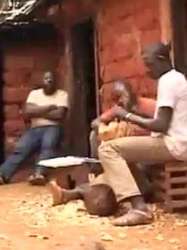
Je ne suis pas moi-même (2007)
, 52minutesOrigin Espagne
Genres Documentary
Je ne suis pas moi-même explores the contradictions within the world of African antiques. Where do the African masks come from? How did they arrive in the showcases of the biggest galleries and collections in Europe? Who decides how much each piece is worth in this post-colonial context? In Europe there's a market needy of new ethnic art pieces. In Africa they’re in need of economical resources, some are willing to sell their cultural legacy or even fake it if need be. The limits of authenticity grow blurry when sacred objects by those who adored them a very short time ago.
 Connection
Connection